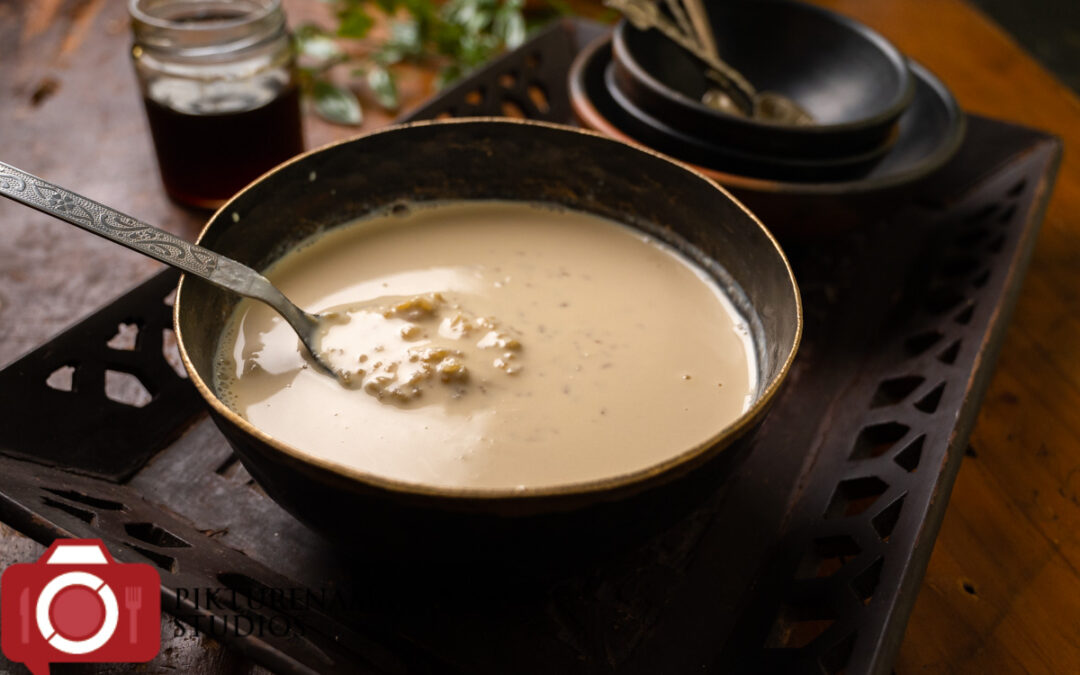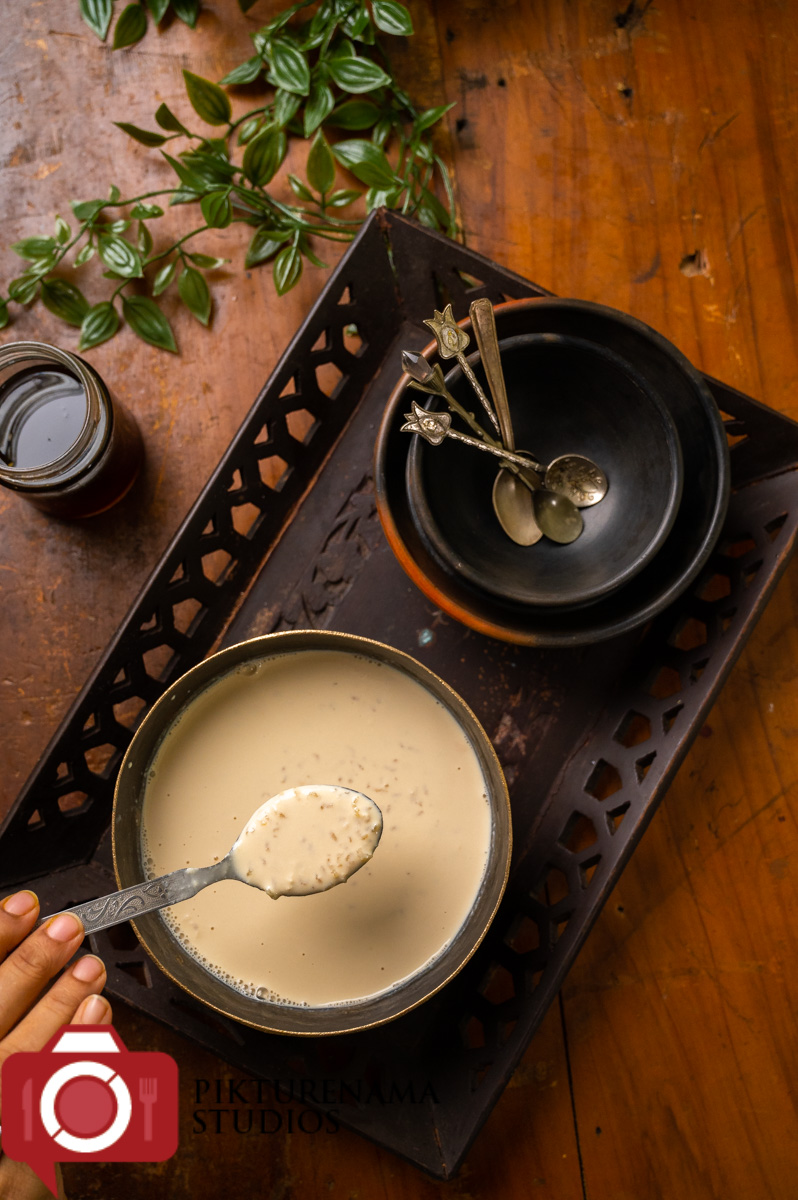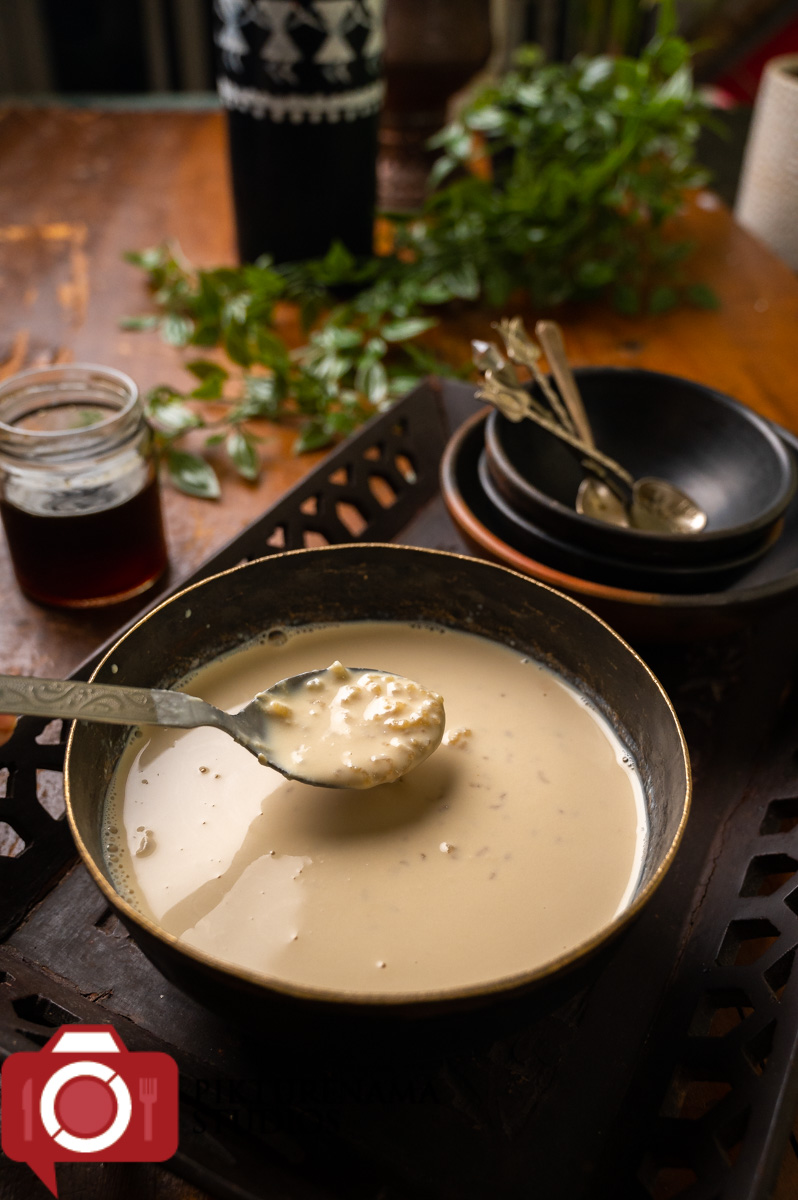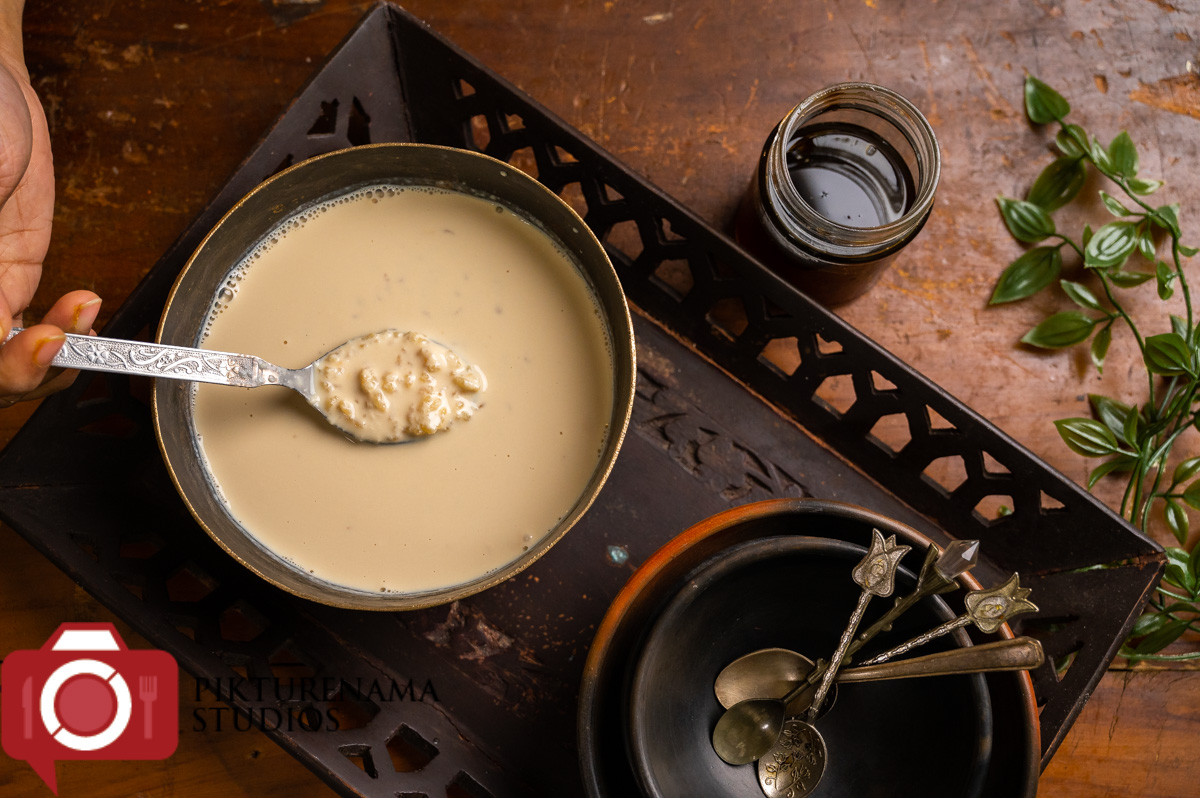How about a bowl of sweetness to kick off the new year in 2023? Winter is the time to indulge in sweets made with nolen gur. We call it khejur’er gur since it is made with the sap of date palm and it is available only during winter. This gur has an exquisite flavour and a captivating aroma. Due to numerous other commitments, we haven’t written on the blog in a month. However, we are back and serving nolen gurer payesh, a rice pudding from Bengal that is flavoured with khejur er gur. With Makar Sankranti around the corner, this will be cooked in almost all homes during this season.
Khejur’er gur is available in two forms- solid form is called patali gur and the liquid form is called jhola gur. Nowadays, it is commonly known as nolen gur. The word ‘nolen’ comes from new, hence Nolen. And ‘Jhola’ comes from ‘jhol’ which has a runny consistency, hence jhola gur. Patali gur has more quantity of sugar than jhola gur since it is needed to make it solid. Either way, this is love for us and we treat nolen gur like liquid gold.
More about Nolen Gur
Any form of nolen gur, including patali gur, provides an unreal sensation. Making it requires a lot of discipline, hard work, and attention on the back end. The procedure begins when the Shiulis lease the date palm trees at the beginning of winter. In rural areas, the process is handled alone by the owner of the date palm trees. The Shiulis are a group of accomplished tree climbers that gather sap from date palms. When the temperature drops, the sap is at its optimum. On metallic trays placed over a wood fire, it is gathered and reduced. The reduced first part—the golden part—is nolen gur, and the rest goes on to reduce further to form patali gur.
You can read an interesting article on Nolen gur written by Anindya here– ZeeZest Article
Behance
Key elements needed for the recipe
The sweet shops sell a variety of sweets made of khejurer gur. However, payesh is the only thing that is always homemade. And trust me, it is one of the most difficult Bengali recipes to make, even though it has minimal ingredients. The cooking process isn’t very different from the regular Bengali payesh. My grandmother always told me that while making payesh with gur, give all your love and importance to that one ingredient. So she never added cashew or raisins to this payesh.
Good quality nolen gur is of course needed. Another very key element for making nolen gurer payesh is gobindobhog rice. It’s a short-grained fragrant rice, similar to ambe mohar in Maharashtra. The trick is to use very less rice. I remember, my first time making gurer payesh. Ma told me to take ‘ek mutho chal’ meaning one handful of rice. I thought she must have gone nuts, not measuring out ingredients and I used more than that. The resulting dish was doodh bhaat- not the right consistency at all. So don’t be tempted, for every 1 lt of whole milk, use only 2 tbsp (measured) of rice.
Here are a few Bengali dessert recipes with nolen gur:
- https://pikturenama.com/how-to-make-bengali-style-patishapta-pithe/
- https://pikturenama.com/ranga-alur-dudh-puli-poush-sankranti-recipe/
- https://pikturenama.com/how-to-make-ranga-alur-roshopuli-traditional-deep-fried-sweet-potato-dumplings-in-date-palm-syrup/
- https://pikturenama.com/soru-chakli-shoru-chakli-pitha-recipe-poush-sankranti/
Step-by-step process of making nolen gurer payesh
- Soak gobindobhog rice in water for 30 minutes and then discard the water. Spread the rice over a clean cloth and let it dry.
- Put the milk on a boil and then reduce it while stirring continuously over low heat. You have to stir continuously while removing the skin from the sides. For the perfect payesh texture, you cannot allow the skin to form.
- When the milk has reduced to almost half (about 2/3 and a little more), add the rice. Again, keep cooking and stirring continuously.
- It doesn’t take long for gobindobhog rice to cook and more importantly, we want an ‘al dente’ texture of the rice. The rice needs to cook but not all through, not mushy.
- The minute the rice has reached the desired texture, add a tsp of sugar to stop the cooking of the rice any further. You will see that as it continues cooking, the milk will loosen up a bit more since sugar melts and when the payesh starts boiling in a manner where small bubbles are bursting out, take it off the heat and add nolen gur to taste.
- You cannot add nolen gur while it is cooking because there are chances of the milk splitting due to impurities in gur.
- As it cools down, the milk thickens and the payesh gets the right consistency
- Refrigerate it and serve it chilled.
Share your cooking with us
Are you following us on our youtube channel Cook with Pikturenama?
Do try this recipe and share your feedback. You can also reach out to us at our social media handles Instagram, Facebook or any of our personal Facebook (Madhushree & Anindya) & Twitter profiles. Please post a picture and tag us.
Here is the reel which we made for this –
https://www.instagram.com/reel/Cm-s36ItnVZ/
Pin this for your recipe board. You can follow us on Pikturenama recipes for more recipe ideas (Link)
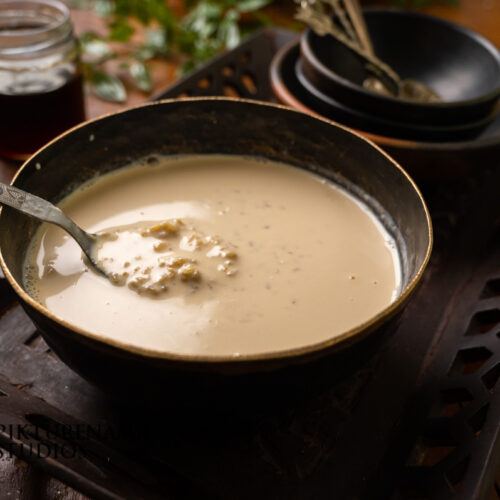
Nolen Gurer Payesh | Bengali Rice Pudding with Nolen Gur
Ingredients
- 1 lt full-fat milk
- 2 tbsp Gobindobhog rice or any other fragrant short-grained rice
- 1 tsp sugar
- 3-4 tbsp nolen gur to taste
Instructions
- Soak gobindobhog rice in water for 30 minutes and then discard the water. Spread the rice over a clean cloth and let it dry.
- Put the milk on a boil and then reduce it while stirring continuously over low heat.
- You have to stir continuously while removing the skin from the sides. For the perfect payesh texture, you cannot allow the skin to form.
- When the milk has reduced to almost half (about 2/3 and a little more), add the rice. Again, keep cooking and stirring continuously.
- It doesn't take long for gobindobhog rice to cook and more importantly, we want an 'al dente' texture of the rice.
- The rice needs to cook but not all through, not mushy. The minute the rice has reached the desired texture, add a tsp of sugar to stop the cooking of the rice any further.
- You will see that as it continues cooking, the milk will loosen up a bit more since sugar melts and when the payesh starts boiling in a manner where small bubbles are bursting out, take it off the heat and add nolen gur to taste.
- You cannot add nolen gur while it is cooking because there are chances of the milk splitting due to impurities in gur.`
- As it cools down, the milk thickens and the payesh gets the right consistency
- Refrigerate it and serve it chilled.

